Restoring the Windows System State
- This article is for Windows only
Summary:
Carbonite Safe Server Backup (CSSB) supports the recovery of Windows System State by restoring the Registry, Boot files, System files, Active Directory and more. When used correctly in combination with a File System Backup, a computer can be brought back to the exact state it was in at the time of backup.
CSSB offers recovery of Windows System State on all the supported Windows platforms. The entire contents of the Windows System State backup will be restored. Selective restore of individual System State components is not possible.
You can restore your data to the original backed up computer or to a different computer.
Solution:
Please choose the scenario that best fits your situation:
The following requirements must be met, whether restoring to the original computer or to an alternate computer:
- The amandabackup / CarboniteUser user must have full access to the folder where the backups are stored.
- For cloud backups, this is the chosen Download Folder.
- For local backups, this is the folder where the backups are stored on the local disk.
- If the backups are stored in a network location, amandabackup / CarboniteUser must have access to the network folder. Please refer to How to Use External or Mapped Network Drives with CSSB.
- Likewise, the amandabackup / CarboniteUser user must have full access to the folder(s) to which the backups are being restored.
Additional Requirements
- The Windows version of the restore computer (including Service Packs) must match the original computer where the System State backup was performed.
- For example, if the original computer was Windows Server 2003 with Service Pack 2, the computer you'd like to restore to must also be Windows Server 2003 with Service Pack 2.
- Any variation will result in failure to restore.
- It is strongly recommended to restore a System State backup to identical hardware as the original computer.
- Restore to similar hardware is usually possible, but may result in errors or failure to restore.
- The greater the dissimilarities between the hardware on the original and restore computers, the less likely it is that the System State restore will succeed.
- Restoring for Server 2016 and newer, or to Windows 11 Pro 22H2 and newer the computer will need to be in Safe Mode for the restore process or it will fail.
If Carbonite Safe Server Backup is already installed on your computer, you can open the user interface and begin restoring your data to your computer.
Restoring the Backup Data
To perform a system state restore, follow the steps below:
- Navigate to the Restore page and select the backup run associated with the System State backup you want to restore.
- In the Restore Point dropdown menu, CSSB will show you all the relevant backup images for this restore operation (Only Full Backups will be availaibe for restore). The restored data will be exactly the same as it existed for the time stamp contained in the backup run images.
- The Restore Location field will default to Original Location. Within the Advanced Settings section, the Name Conflict Settings field will default to Overwrite Existing.
- After confirming your settings, click Restore Now to start the restore process.
You can restore your backed up data originating from one computer to a different computer. This method is mostly used to create a clone of the original system. For System State restores, you must install the same Windows Operating System (with the same service packs) on the restore computer as was installed on the original computer. This procedure requires some additional steps before you can launch the actual restore process. The steps are as follows:
1. Installing CSSB on the Target Computer
You can install Carbonite Safe Server Backup (CSSB) after signing into your account on our website and clicking the Install Carbonite button. Once the installation is complete, you will have to import the cloud certificate before you can start backing up data.
Sign in to your account at https://account.carbonite.com.
Click the Install Carbonite button on your computer.
Select the version of Windows running on the server in order to get the correct installer and Cloud Certificate.

Download the cloud certificate.
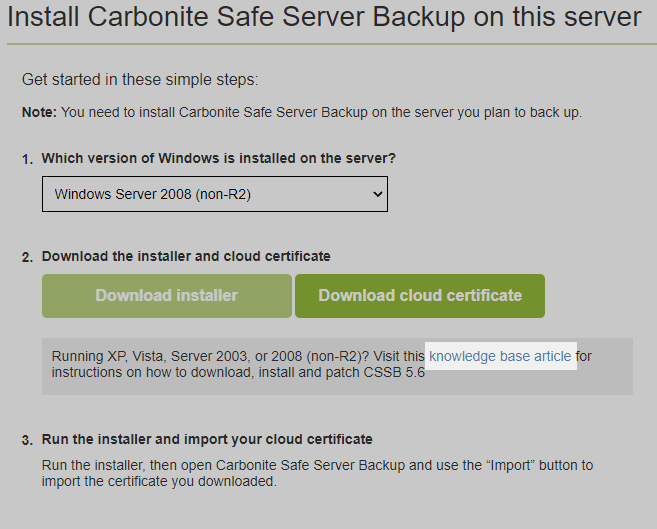
Launch Carbonite Safe Server Backup. Within the user interface, select Cloud from the menu option and click Import Cloud Certificate.
A Cloud Certificate window will appear, allowing you to browse to the location of your cloud certificate. Click the Browse button to select and upload your downloaded certificate.
A Choose Certificate window will appear, allowing you to select your cloud certificate. Click Choose Certificate to proceed.
Once your cloud certificate has been successfully uploaded, you will receive a notification message.
3. Importing Existing Backup Sets
To import existing backup sets, select Tools from the menu option and click Import Existing Backup Sets.
A Import Existing Backup Sets window will appear. You will have the option to select Import Backup Sets from Cloud or Import Backup Sets from Local Directory.
Within this screen, specify information for the following fields:
- Cloud Location - This field will only be visible when the radio button for Import Backup Sets from Cloud is selected. CSSB can back up your data to data centers across the globe. The default selection is All Cloud Locations.
- Host Name - This refers to the host name of the original computer, without the domain name.
- Enter a valid hostname to import backup sets only for the host provided.
- Enter an * (asterisk) to import backup sets for all of the computers which were backed up using CSSB.
- Leave this field blank to use the hostname of the computer on which CSSB is installed.
- Backup Set Name - This refers to the name of the backup set on the original computer when the backup was performed.
- Leave this field blank to import all backup sets.
- Use an * (asterisk) as a wildcard.
- Enter just an * to import all backup sets.
- Enter exchange* to import all backup set names that begin with exchange, such as exchangebackup, exchangeone, etc.
- The backup set name field is case sensitive.
- Restore Location - Information about the backup sets must be downloaded to the local computer temporarily as part of the Import Existing Backup Sets process. This field allows you to specify a temporary location on the local computer where the information is kept.
- Backup Data Location - This field will only be visible when the radio button for Import Backup Sets from Local Directory is selected. It refers to the directory in which the local backups are stored.
- You must specify the exact folder in which the local backups are stored. Sub-folders will not be scanned for backups.
Once the backup sets have been successfully imported by CSSB, you can follow the normal restoration steps outlined in Restoring the Backup Data.
4. Restoring the Backup Data
To perform a system state restore, follow the steps below:
- Navigate to the Restore page and select the backup run associated with the System State backup you want to restore.
- In the Restore Point dropdown menu, CSSB will show you all the relevant backup images for this restore operation (Only Full Backups will be availaibe for restore). The restored data will be exactly the same as it existed for the time stamp contained in the backup run images.
- The Restore Location field will default to Original Location. Within the Advanced Settings section, the Name Conflict Settings field will default to Overwrite Existing.
- After confirming your settings, click Restore Now to start the restore process.




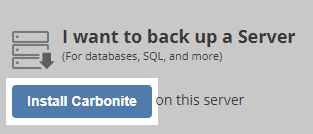
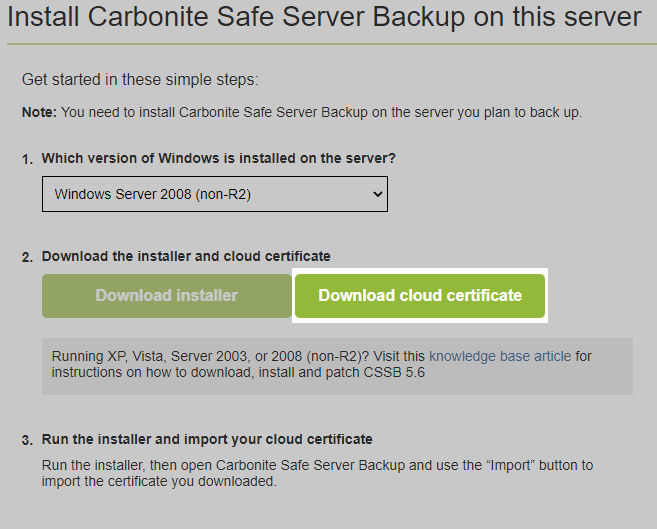


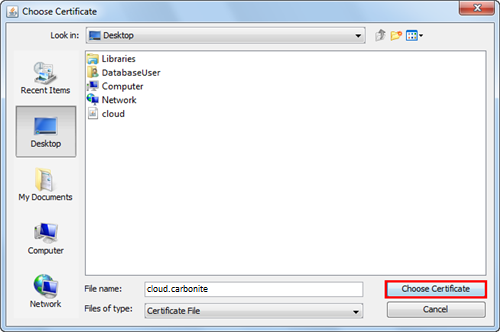
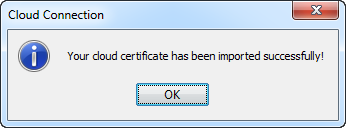
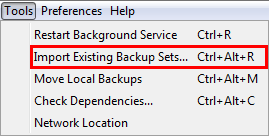
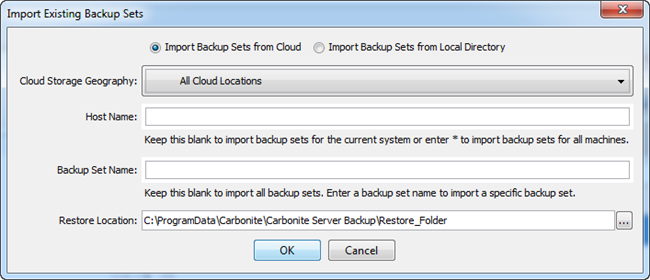
 Feedback
Feedback